From Pamphlets to Pride: 100 Years of LGBTQ+ Activism
The history of LGBTQ+ activism in the United States is long. For the past century, the struggle for equality has taken many forms and faced many challenges, as the LGBTQ+ community have fought for their rights and their lives.
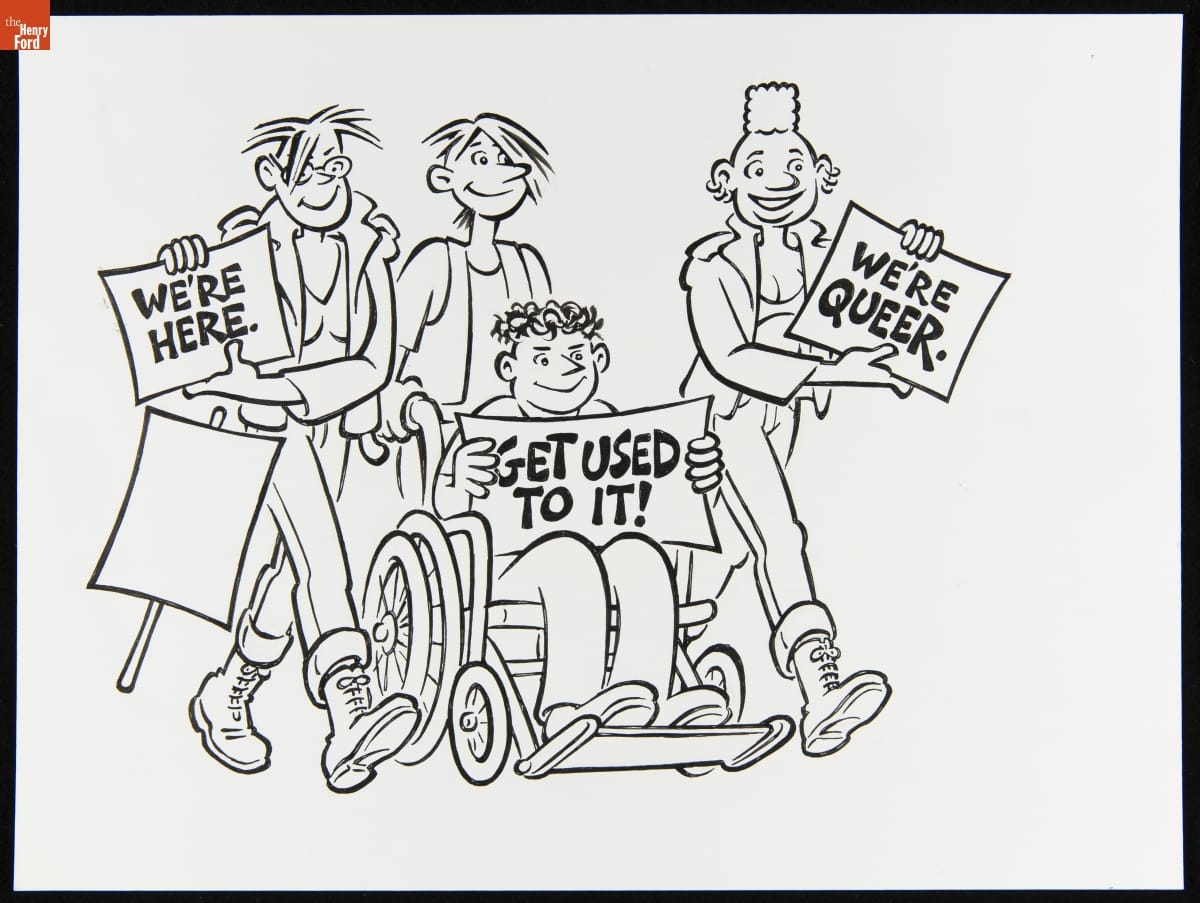
Illustration, "We're Here. We're Queer. Get Used to It!," circa 1995 / THF627364
Inspired by the developing gay community he encountered while working in Weimar Berlin, in 1924 German immigrant Henry Gerber legally incorporated the first homosexual organization in the United States — the Society for Human Rights. Black clergyman John Graves served as the organization’s first president. The society would exist for only a year before being forced to collapse due to lack of membership and legal prosecution, but during its short tenure, it published two editions of its “homophile” (an early activist term for “homosexual”) newsletter, Friendship and Freedom.
In the 1950s, LGBTQ+ publications became more available through region-specific activist organizations. These newsletters were often distributed at gay bars, which had become crucial safe havens for the gay community. This availability, however, did not denote a societal or governmental change in feeling toward queerness; indeed, the Red Scare of the 1950s had an accompanying Lavender Scare, as the U.S. State Department sought to rid the federal government of communists and queer people in the name of alleged security (using coded language like “moral risks” to define their parameters for expulsion). Still, LGBTQ+ groups continued their activism, through both their printed publications and their very existence.
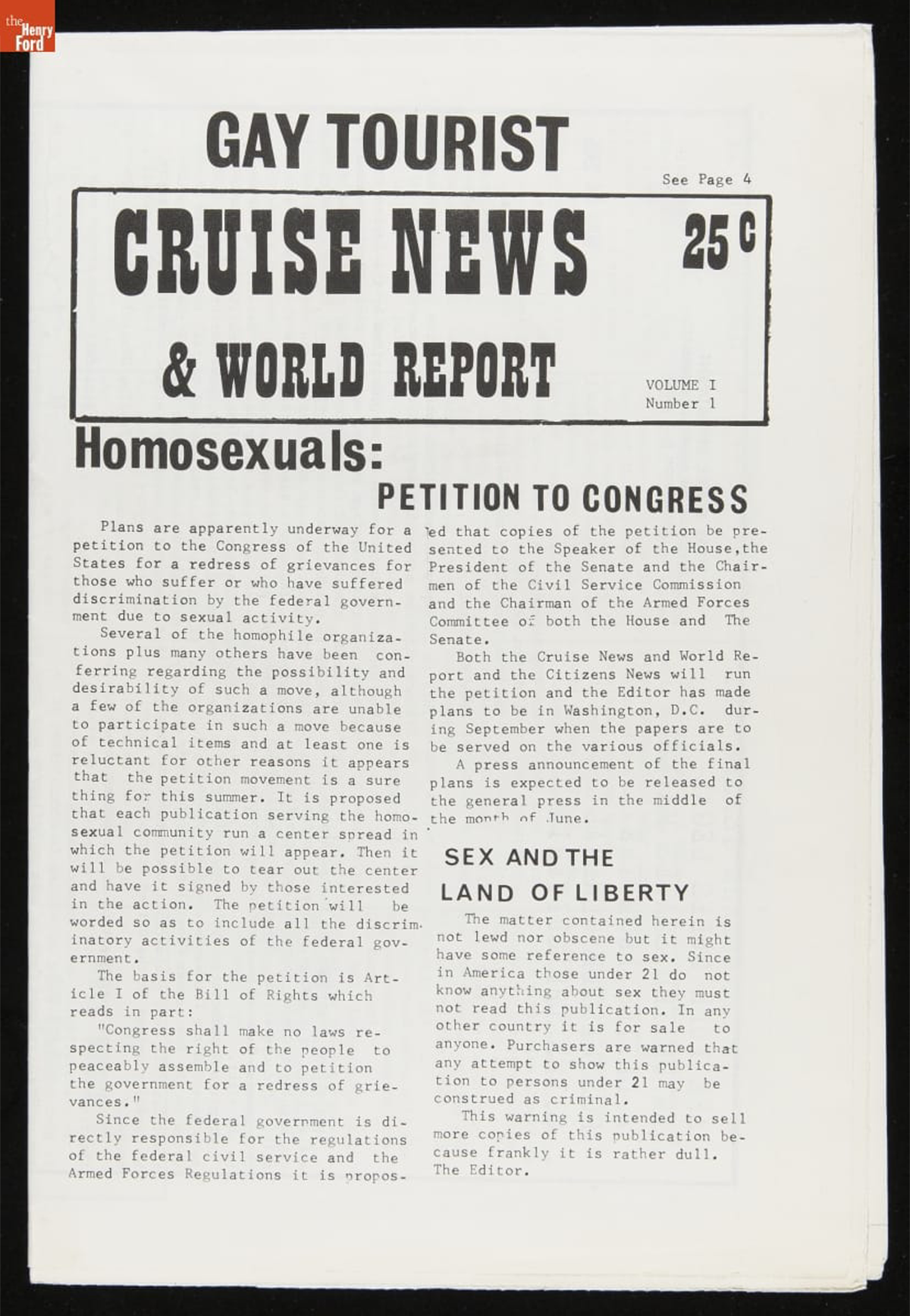
Cruise News & World Report, Volume I, Number 1, circa 1965 / THF627138
A major turning point in the history of LGBTQ+ activism came during the midst of the social upheaval of the summer of 1969. In the early hours of June 28, police officers raided the Stonewall Inn, a gay bar in New York’s Greenwich Village. Police had frequently raided gay bars, including the Stonewall, yet something was different this time. Instead of dispersing, as was typical, the crowd held firm; as officers attempted to load people into police vans and cars — resorting to clubbing people to get them to comply — the crowd began chanting and yelling. One butch lesbian, fighting against being put in a vehicle, yelled out, “Why don’t you guys do something?!” The crowd, which by this point included bystanders who had joined in to protest the visible police violence, began fighting back. The Stonewall Riot — also known as the Stonewall Uprising, or simply Stonewall — would continue into demonstrations that would last for the next week.
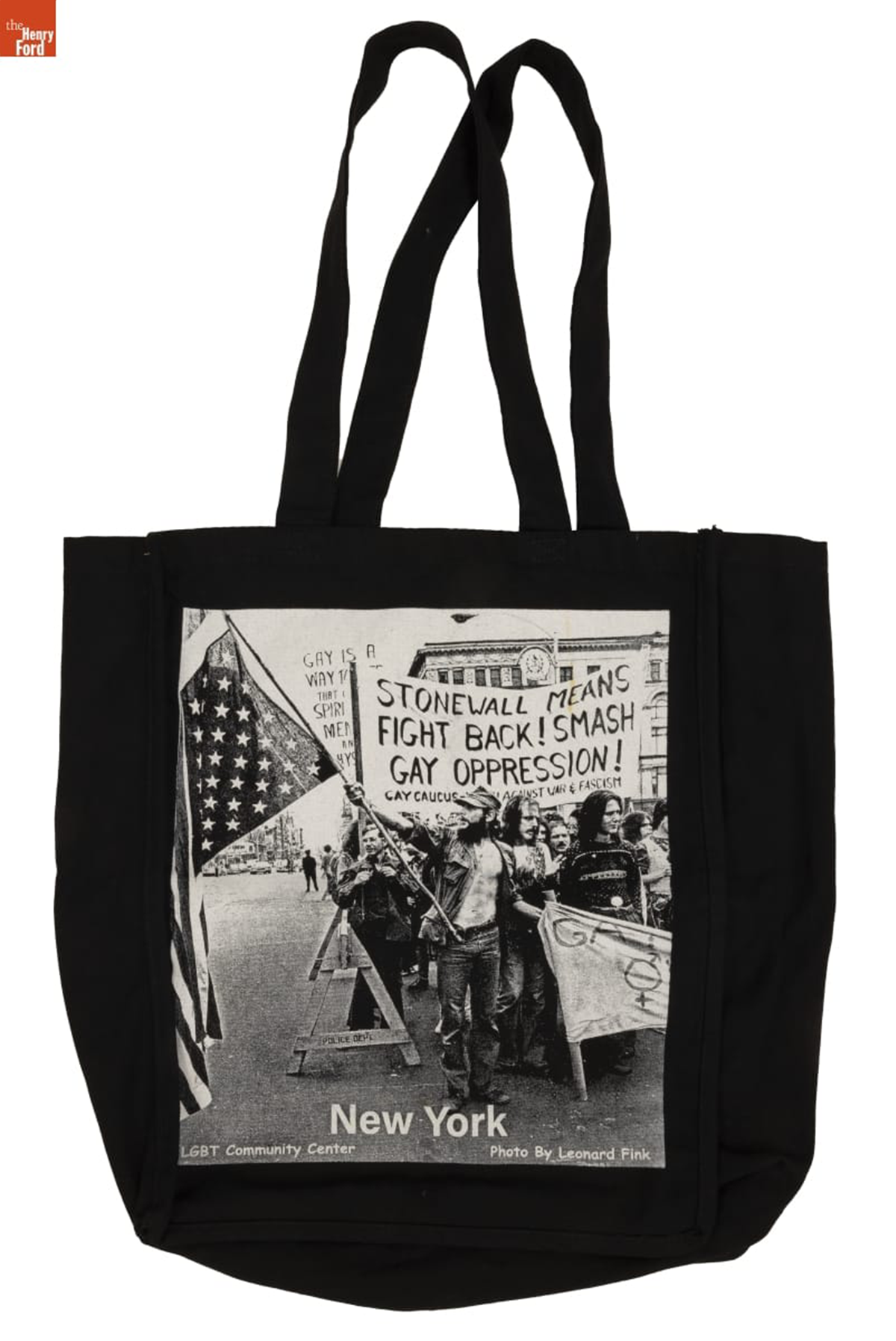
Stonewall Inn Tote Bag, 2022 / THF370667
In the immediate aftermath of Stonewall, organized efforts to advocate for LGBTQ+ rights increased. The Mattachine Society — a gay activist group founded in Los Angeles in 1950 — formed the Mattachine Action Committee in early July 1969 and immediately began producing flyers, organizing events, and calling for change. Other organizations — including the Gay Libration Front, which had split off from the more conservative Mattachine group — also took up the mantle.
Nine years later and on the other side of the country, California faced a vote on the Briggs Initiative, a proposal to ban queer individuals from working in public schools. In response, 1978’s Gay Pride marches in San Francisco and Los Angeles saw attendance in the hundreds of thousands. Speaking to a crowd of 350,000 people at San Francisco’s Gay Freedom Day, Harvey Milk — the first openly gay man to win a nonincumbent election for political office in the United States when he was elected to the San Francisco Board of Supervisors in 1977 — called for a March on Washington, arguing: “We will not win our rights by staying quietly in our closets.” Despite early confidence that the measure would pass, the Briggs Initiative was defeated in the November election, 58-42 percent. The feelings of victory would be tempered, however, when Harvey Milk and Mayor George Moscone were assassinated on November 27; when the killer was convicted of the lesser charge of voluntary manslaughter instead of first-degree murder, over 3,000 people from Milk’s Castro District surged to San Francisco’s city hall in protest, chanting “Avenge Harvey Milk.” The resulting turmoil became known as the White Night riots — the biggest LGBTQ+ uprising since Stonewall.
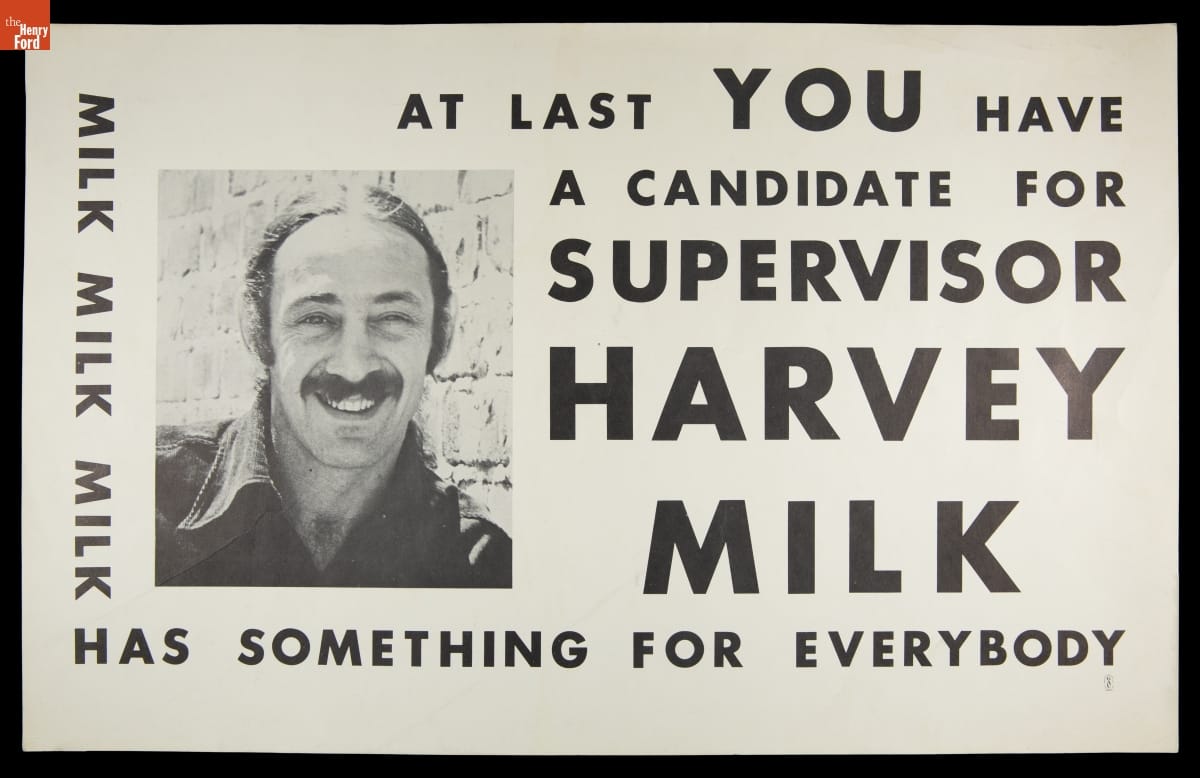
"At Last You Have a Candidate for Supervisor: Harvey Milk Has Something for Everybody," 1973 / THF714214
In 1981, the Centers for Disease Control published a report about a previously rare but deadly form of pneumonia that was occurring in gay men in California; at the same time, health officials also noted an increase in cases of Kaposi’s sarcoma among gay men in New York. These cases would become the first indicators of what was to come: the AIDS crisis, which would reach its peak in the United States between 1987 and 1998. As more and more American citizens were affected, the government was silent and seemed unwilling to help. In March 1987, the Silence = Death Collective designed and published its iconic poster, seeking to channel the grief and terror in the gay community toward action. Later that same month, gay activist Larry Kramer co-founded the direct-action group ACT UP (Aids Coalition to Unleash Power), with the goals of fighting stigma, increasing awareness, advocating for better treatment and prevention, and pushing for better public policy. Although death rates began to decline in 1996 — fueled by the creation of effective antiretroviral medication — a grim toll had already been exacted: by 1995, 1 in 9 gay men had been diagnosed with AIDS, 1 in 15 had died of the diseased, and 10% of the 1.6 million gay men between the ages of 15-44 had died, decimating a generation.
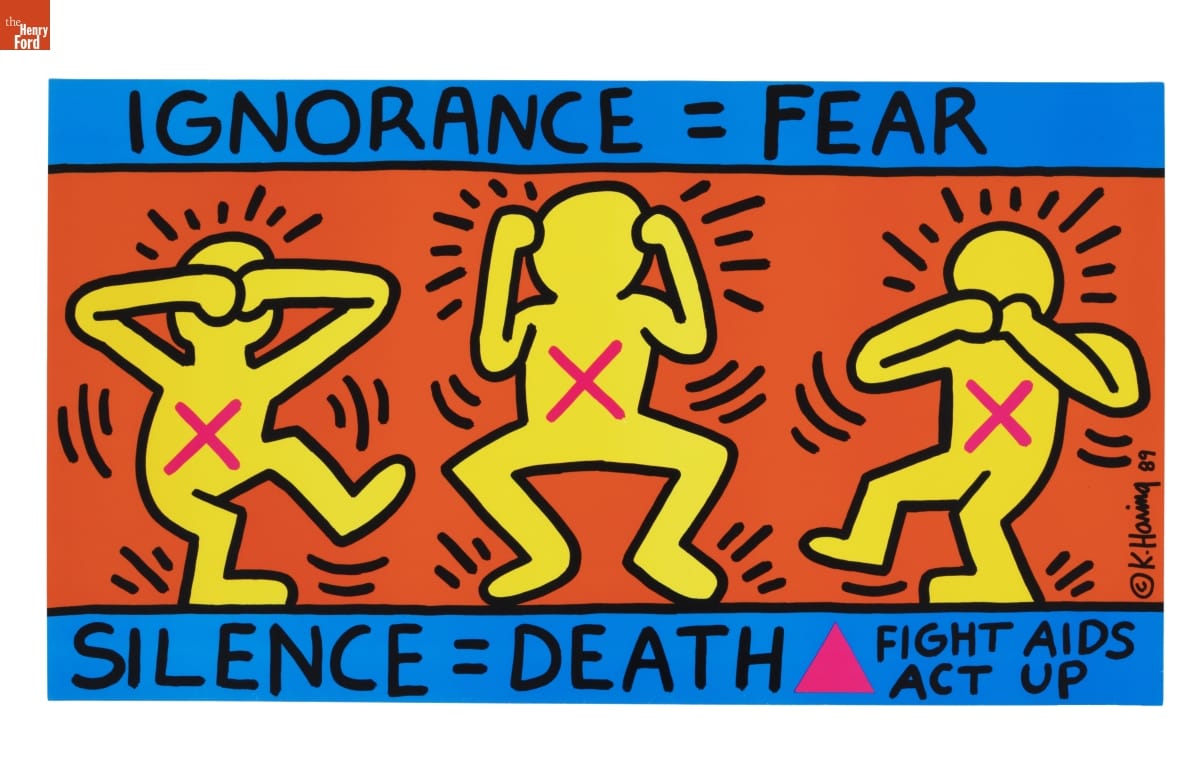
"IGNORANCE = FEAR, SILENCE = DEATH Fight AIDS ACT UP Poster, 1989 / THF179776
Thanks to decades of efforts from LGBTQ+ groups and individuals — both through participating in activism and simply living their lives — many strides have been made in the arena of LGBTQ+ rights and acceptance. Where once the LGBTQ+ community could only meet in safe, small locations like their local gay bar, today over 400 public Pride events take place every year in the United States. There is still work to be done, though, as the LGBTQ+ community continues to face marginalization and outright persecution in many areas, and certain groups within the community face their own distinct challenges . In the words of LGBTQ+ activist and icon Marsha P. Johnson, “You never completely have your rights, one person, until you All have your rights.”
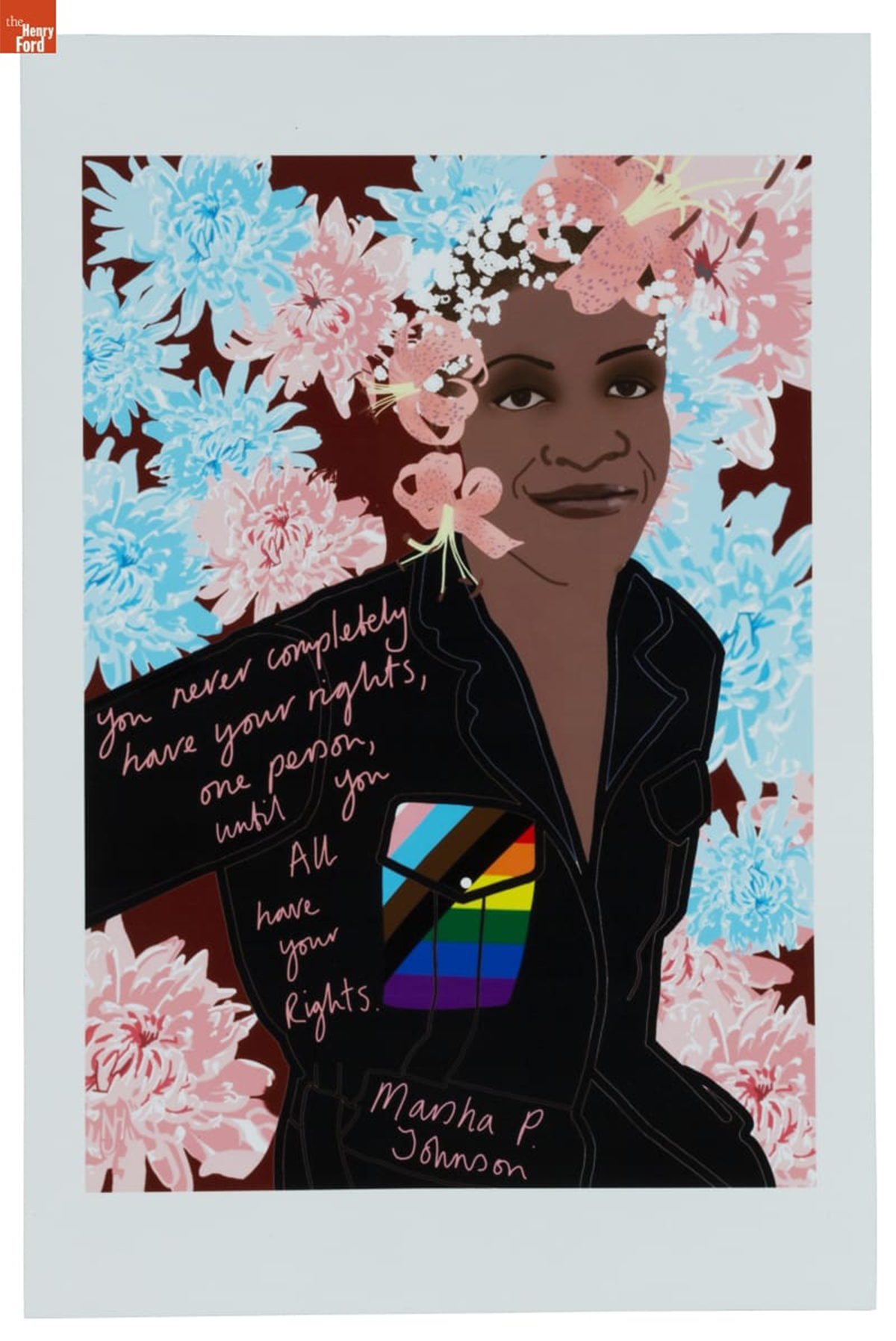
"Marsha P. Johnson New Pride Flag, "You never completely have your rights, one person, until you All have your rights," 2018 / THF190491
Rachel Yerke-Osgood is an associate curator at The Henry Ford.

